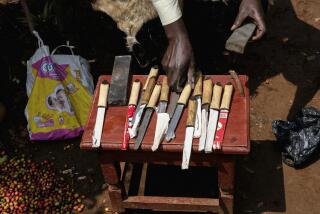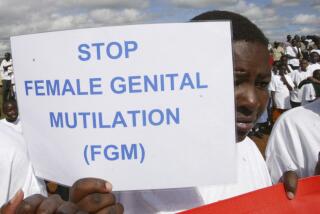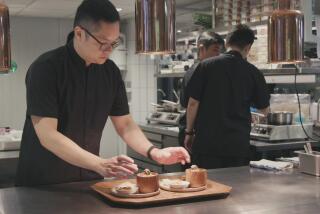Singapore Muslims Invoke a Remnant of Surgical Tradition
- Share via
SINGAPORE — Ratna Damayanti considers herself a modern Muslim. Like many of her peers in this wealthy island nation, she counts coffee shops and jazz bars among her favorite haunts and watches “Friends” every week.
Damayanti also thinks of herself as more modern than her more conservative Muslim girlfriends who wear the Islamic headscarf. But the extroverted college student does have one thing in common with them.
They were all circumcised when they were a few days old. And she says that if she ever has daughters, she will have no qualms about putting them through the same procedure.
“I would allow my children to go through it,” she says. “It’s not like they are removing everything.”
In Singapore’s small Muslim community, female circumcision involves nicking the prepuce, the skin covering the clitoris.
It is markedly different from the practices of some Muslim communities in Africa and the Middle East that are decried by human rights activists as female genital mutilation. In some cases, a young girl’s clitoris is clipped and burned. In a few communities, all the external genitalia are cut off and the remnant tissue is sewn up to leave only a small opening.
Those practices originated 1,400 years ago, before the birth of Islam’s Prophet Muhammad, said Noor Aisha Binte Abdul Rahman, a Malay studies professor at the National University of Singapore.
Singapore’s milder form is viewed as symbolic of this tradition.
But the custom has no religious basis and no guidelines -- except that it should not bring harm to believers, said Zhulkeflee Haji Ismail, manager of Singapore’s Islamic Scholars and Religious Teachers Assn.
“Some people just follow customs without knowing what they’re about,” the scholar said. “Traditions die hard.”
Yaacob Ibrahim, the government minister in charge of Muslim affairs in this city-state, said he does not plan to circumcise his daughter since it is not a religiously required practice.
He said there are no laws regulating the practice in Singapore, whose predominantly Chinese population of 4 million includes 300,000 Muslims, most of them ethnic Malays.
Circumcisions in Singapore are done by female doctors at a handful of Muslim clinics. It’s another contrast to areas that practice the harsher forms of circumcision, which are often done by nonmedical practitioners in unsanitary conditions.
Dr. Masayu Zainab Masagos Mohamed, who circumcises five to six patients a day at a Singapore clinic, said the procedure is usually performed on babies or prepubescent children. But it has been done on women of all ages.
The procedure involves using small, stainless steel scissors to make a “nick” of a half-inch or less on the skin covering the clitoris, Zainab said.
No anesthesia is used because the injection would be more painful than the cut itself, she said, and she prescribes an antibiotic cream for the punctured skin. The procedure costs about $17 and is not covered by insurance.
Zainab, who wears a headscarf, said there is no specific medical rationale for the practice, although many Muslim women think there is. In the past, Singapore females were circumcised at home by traditional Malay midwives, Zainab said.
Not all Singaporean Muslims embrace the practice. Some, like 27-year-old housewife Nur Naadiya Chia, said it is “outdated and inhumane.”
But most Muslim women go along with the practice. They say it does not affect their sexuality nor cause them any discomfort.
“The procedure is like having your ears pierced,” said Zaileen Mohammed Zain Tahar, a mother of two sons and a daughter. “It’s nothing.”
More to Read
Sign up for Essential California
The most important California stories and recommendations in your inbox every morning.
You may occasionally receive promotional content from the Los Angeles Times.













